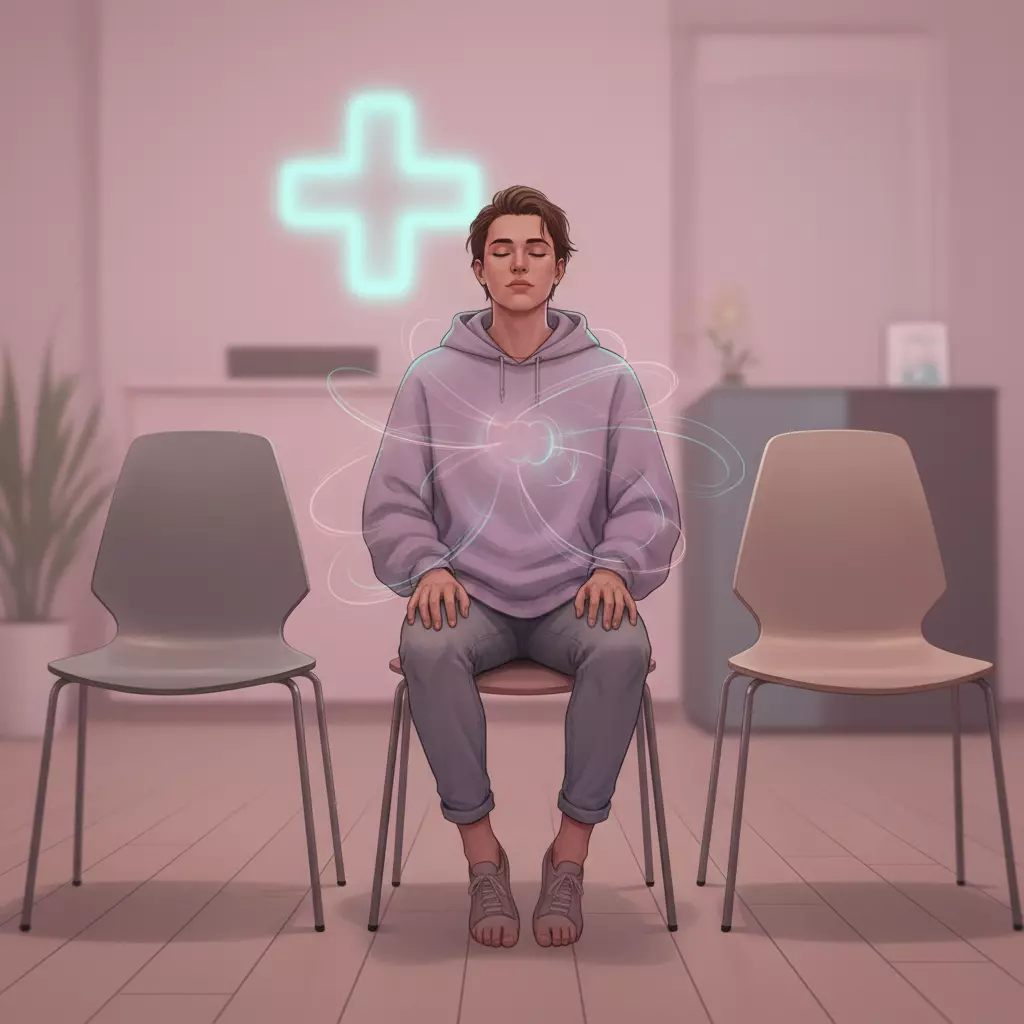Table of Contents
Imagine this: you’re standing in line at a clinic, paperwork in hand, and you already feel that knot in your stomach. You don’t know if the staff will respect your name. You don’t know if the doctor will roll their eyes at your concerns. Your body already feels like a battleground—binder too tight, voice cracking, skin crawling with dysphoria—and now the healthcare system piles on another layer of stress.
It’s in these moments that the cravings start. That subtle whisper: escape, numb, disappear. For many, this is where transgender grounding techniques can make the difference between spiraling and staying present.
Problem A: Body-based triggers drive relapse
Dysphoria isn’t just discomfort; it’s a full-body alarm bell. Add healthcare stress—misgendering, delays in care, financial barriers—and suddenly the nervous system is overloaded. The brain interprets this as danger, and old coping mechanisms (like relapse or self-destructive urges) come rushing back.
Grounding isn’t fluff. It’s an evidence-backed way of interrupting the spiral before it pulls you under.
Research shows that when we rely on rumination or denial in these moments, distress only deepens. But when people reach for adaptive coping—problem-solving, mindfulness, social support—the cycle shifts.
Problem B: Which grounding drills actually help?
When dysphoria or stress pulls you out of yourself, the best drills are the ones that bring you back into the present and into your body—with compassion, not judgment.
- Mindful body scan → notice each sensation, pair it with affirmations (“my breath keeps me alive; I deserve ease”).
- 5-4-3-2-1 sensory grounding → name 5 things you see, 4 things you feel, 3 things you hear, 2 things you smell, 1 thing you taste.
- Progressive muscle relaxation → tense, release, and offer patience to the body parts that feel most unbearable.
- Breathing drills with affirmations → inhale: “I am worthy of care.” Exhale: “This stress is not my fault.”
- Visualization of affirming spaces → imagine providers using your name and pronouns, restoring a felt sense of dignity.


No Contact Isn’t a Game – It’s a Healing Strategy
Let’s examine the No Contact strategy in: Science & Psychology, Planning it, Digital Hygiene, Relapses-Cravings & Crashes, Special Cases & Exceptions… and Signs that it’s working +What comes next.
Tap here to read more →Problem C: Using grounding as a strategy, not just a reaction
The biggest shift comes when grounding stops being something you only reach for mid-crash.
Imagine weaving it into your daily rhythm:
- A three-minute breathing check-in before bed
- A quick sensory scan after binding
- A journal entry noting which situations spark dysphoria most
Over time, these small practices raise your baseline resilience—like strengthening a muscle so it doesn’t give out when you need it most.
Grounding also becomes more powerful when paired with community. Sharing drills with a trusted friend, practicing together, or even texting “doing my 5-4-3-2-1 right now” can transform a solo survival tactic into collective care.
I belong to myself, not to my triggers.

Final Thoughts
Grounding won’t erase dysphoria. It won’t fix a broken healthcare system.
But it can give you something just as vital:
- A thread of steadiness to hold when cravings whisper
- A reminder that you can still root yourself
- A path to return, again and again, to your own power
Even in the chaos of body and world, transgender grounding techniques offer a way forward—one grounded breath at a time.
FAQ
Q1. What are grounding techniques for transgender people?
Grounding techniques for transgender people are practical exercises—like sensory scans, breathing drills, or body affirmations—that help manage dysphoria and healthcare stress. They bring attention back to the present, calm the nervous system, and reduce cravings or relapse risk.
Q2. How do grounding drills help with body dysphoria?
Grounding drills help shift focus from distressing body sensations to neutral or supportive ones. For example, progressive muscle relaxation or the 5-4-3-2-1 sensory method can redirect attention, easing the intensity of dysphoria in the moment.
Q3. Can grounding techniques prevent relapse or emotional crashes?
Yes. Research shows mindfulness and grounding practices increase distress tolerance, making it less likely that dysphoria or healthcare stress will trigger relapse. Regular use builds resilience, so crashes become less frequent and easier to recover from.
Q4. What are the best transgender grounding techniques for healthcare stress?
Visualization of affirming spaces, breathing with self-affirmation, and sensory grounding are especially effective for healthcare stress. These tools provide a sense of control and calm when facing misgendering, long waits, or invalidating medical environments.
Scientific Sources
-
Itala Chinazzo, Anna Martha Vaitses Fontanari, Annelise Riva, Maria Inês Rodrigues Lobato et al. (2024): Coping strategies employed by transgender youth with higher and lower quality of life
Key Finding: Transgender youth with higher quality of life used more adaptive coping strategies like problem-solving and social support, while maladaptive strategies like rumination correlated with worse distress.
Why Relevant: Body dysphoria and healthcare stress are forms of gender-related stress. This study shows which coping strategies improve outcomes, informing grounding drills for healing.
https://bpspsychub.onlinelibrary.wiley.com/doi/10.1111/bjdp.12524 -
MFG Lucassen et al. (2022): Coping Strategies to Enhance the Mental Wellbeing of Sexual and Gender Minority Youth (SGMYs)
Key Finding: Mindfulness, relaxation techniques, affirming environments, and social support improve wellbeing among SGMY populations.
Why Relevant: Grounding drills like relaxation and mindfulness are shown to be effective when combined with affirming practices, directly applicable to transgender dysphoria and healthcare stress.
https://www.mdpi.com/1660-4601/19/14/8738 -
SE Priddy et al. (2018): Mindfulness meditation in the treatment of substance use
Key Finding: Mindfulness meditation significantly reduced cravings, substance use frequency, and relapse rates while improving stress tolerance.
Why Relevant: Although not transgender-specific, relapse and cravings are shared issues. Mindfulness grounding tools can reduce dysphoria-triggered cravings and crashes.
https://pmc.ncbi.nlm.nih.gov/articles/PMC6247953/
- Proven Healing: How an Accountability Buddy Transforms Breakup Recovery with Weekly Check-ins

- Breakup Anniversary Survival Guide: Heal, Prevent Relapse & Move Forward

- Slip-Up Repair Plan: How to Recover After No Contact Relapse Without Shame

- Queer Breakup Relapse Recovery: Protect Your Nervous System & Keep Your Streak Strong

- Transgender Grounding Techniques: Powerful Ways to Ease Dysphoria & Healthcare Stress

- Chosen Family Support for Lesbian Women: Powerful Healing Without Looping the Story

- Gay Men Jealousy Reset: Fast Ways to Calm Spikes After Seeing Your Ex

- Women & Nighttime Rumination: 5 Powerful Steps to Heal and Sleep Better

- Men & the Delayed Grief Spike: A Powerful 60-Minute Healing Protocol

Leave a Reply